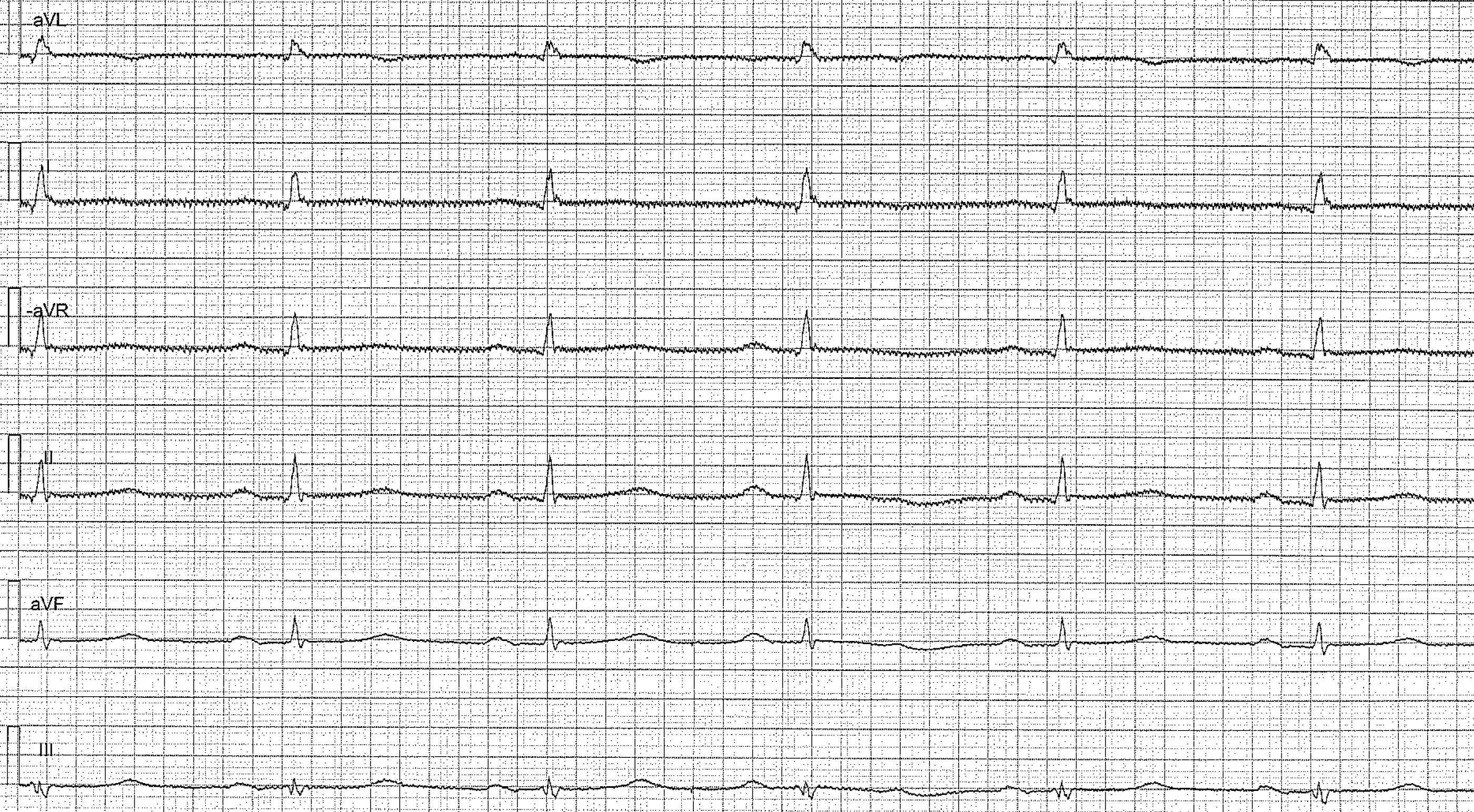Welcome to the first ECG quiz. This quiz includes ECGs recorded at 25 mm/s and 50 mm/s. The paper speed has no significance for the interpretation and you should practice ECG interpretation on both 25 mm/s and 50 mm/s. Click on the ECG to enlarge/zoom.
ECG Test – Quiz 3 – Mixed Conditions
Quiz Summary
0 of 6 Questions completed
Questions:
Information
You have already completed the quiz before. Hence you can not start it again.
Quiz is loading…
You must sign in or sign up to start the quiz.
You must first complete the following:
Results
Results
0 of 6 Questions answered correctly
Your time:
Time has elapsed
You have reached 0 of 0 point(s), (0)
Earned Point(s): 0 of 0, (0)
0 Essay(s) Pending (Possible Point(s): 0)
Categories
- Not categorized 0%
- 1
- 2
- 3
- 4
- 5
- 6
- Current
- Review
- Answered
- Correct
- Incorrect
-
Question 1 of 6
1. Question
A male 25 year-old student at Oxford University is seeing his primary care physician due to palpitations. The palpitations occurs intermittently, but they tend to intensify during stressful periods, such as exam periods. The patient experiences palpitations with sudden onset and occassionally the sensation that the heart skips a beat. Clinical examination reveals nothing suspicious and the patient has not experienced any symptoms during the last week.
What does the ECG show?
Paper speed is 50 mm/s. Heart rate is approximately 65 beats per minute.
CorrectIncorrect -
Question 2 of 6
2. Question
A 70 years-old male was admitted to the ER (emergency room) due to chest pain and discomfort in his left arm. These symptoms debuted a few hours earlier. Physical examination did not reveal anything unusual. The ECG shows a heart rate of 69 beats per minute. The PR interval is 180 ms (normal). The QRS duration is 84 ms (normal). The QTc (corrected QT) interval is 437 ms (normal) and the electrical axis is 30 degrees (normal). Note that the ECG paper speed is 50 mm per second and the leads are presented using the Cabrera format, which is the recommended format. As always, you start by viewing lead II, where you note a positive P-wave. Because the heart rate is 69 per minute, and the P-wave is positive in lead II, you conclude that the rhythm is sinus rhythm, which is correct. You also note that the most positive QRS amplitude is noted in lead –aVR, which is consistent with an electrical axis of 30 degrees (lead –aVR is located at 30 degrees in the coordinate system). Finally you also note that the QRS complex is positive in lead I and lead II, which means that the electrical axis is normal. But the question is, why does this patient experience chest pain?
Chest leads
Limb leads
CorrectIncorrect -
Question 3 of 6
3. Question
Are there any signs of myocardial infarction? Pay attention to lead III in particular.
The paper speed is 50 mm/s.
Chest leads
Limb leads
CorrectIncorrect -
Question 4 of 6
4. Question
Why does this 39-year old male experience palpitations intermittently? Note that paper speed is 50 mm/s (1 large box = 100 ms; 1 small box = 20 ms).
Limb leads
Chest leads
CorrectIncorrect -
Question 5 of 6
5. Question
This 75-year old lady has an abnormal ECG. Two days earlier she experienced chest discomfort and shortness of breath. Define the abnormalitites on the ECG.
Paper speed is 50 mm/s.
CorrectIncorrect -
Question 6 of 6
6. Question
A 71-year old male is admitted to the emegency room (ER) due to palpitations and chest discomfort. What is the correct diagnosis? Note that the paper speed is 50 mm/s.
Limb leads
Chest leads
CorrectIncorrect










